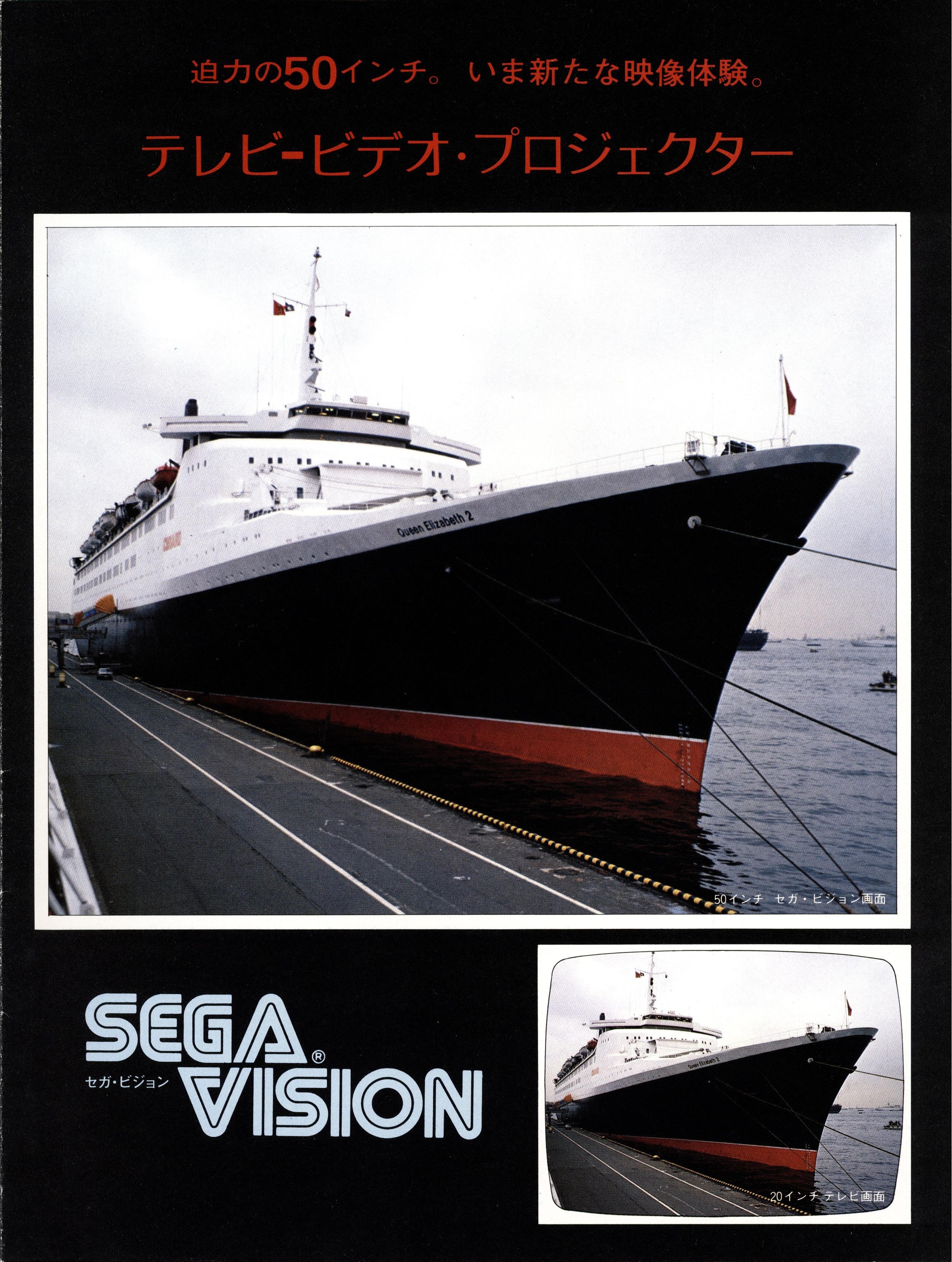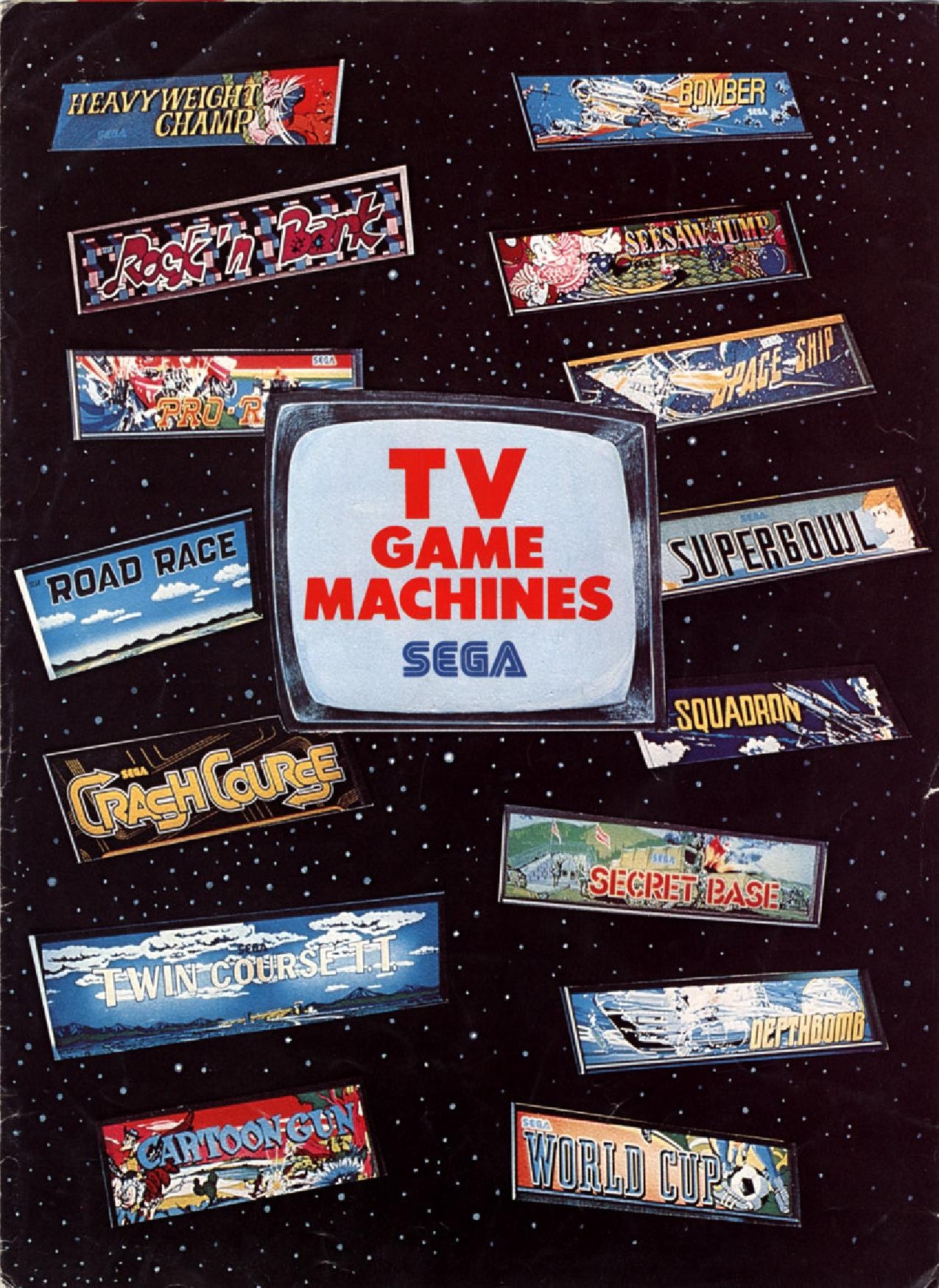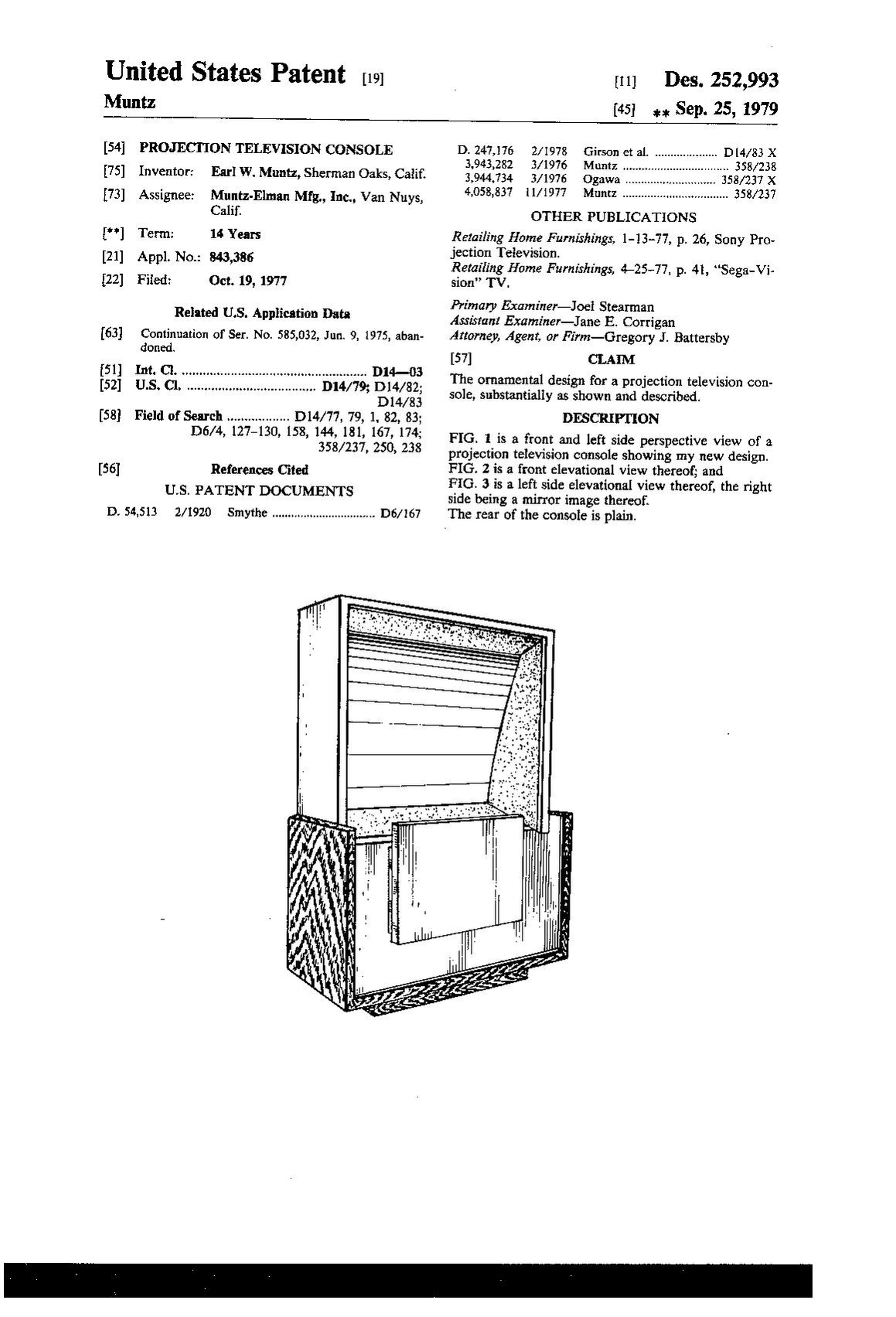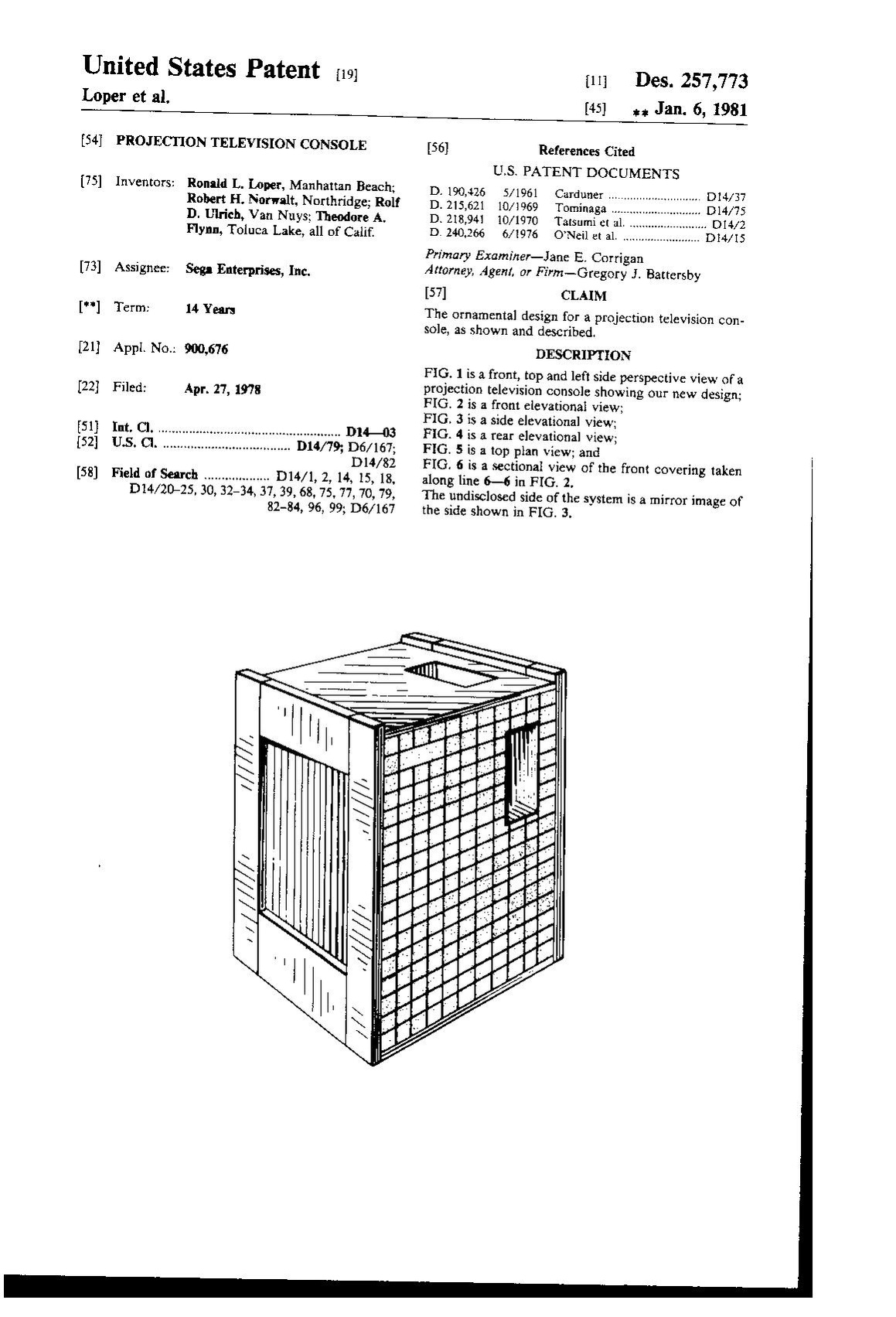Difference between revisions of "Sega-Vision"
From Sega Retro
m |
|||
| (9 intermediate revisions by the same user not shown) | |||
| Line 1: | Line 1: | ||
| − | + | {{ConsoleBob | |
| − | + | | logo=SegaVision logo.png | |
| − | The | + | | consoleimage=SegaVision TV JP.png |
| + | | name= | ||
| + | | maker=[[Muntz Manufacturing]] | ||
| + | | releases={{releasesMisc | ||
| + | | misc_date_jp=197x | ||
| + | | misc_date_us=1976-11{{magref|cb|1977-01-01|33}} | ||
| + | }}}} | ||
| + | {{OtherPage|desc=the portable media player|page=Sega Vision}}The '''{{PAGENAME}}''' is a television set created by [[Sega Enterprises, Inc.]] and was the company's first product meant for the home. It was designed by Earl "Madman" Muntz in 1976, a businessman known for wacky television adverts and for coining the phrase "TV" in America. Sega had acquired his company, [[Muntz Manufacturing|Muntz Manufacturing, Inc.]], in June 1976{{magref|cb|1976-11-13|70}}, and is thought to have begun selling these units in late 1976/early 1977. | ||
==Hardware== | ==Hardware== | ||
| Line 16: | Line 23: | ||
==History== | ==History== | ||
===Release=== | ===Release=== | ||
| − | Sega-Vision units started shipping in November 1976, with an "overall distribution effort" commencing at the start of 1977{{magref|cb|1977-01-01|33}} | + | Sega-Vision units started shipping in November 1976, with an "overall distribution effort" commencing at the start of 1977.{{magref|cb|1977-01-01|33}} |
| − | Sega used then-Los Angeles Dodgers' first baseman Steve Garvey to promote the television set in TV advertisements. A system is also known to have been a prize in a 1970s edition of ''[[wikipedia:The Price Is Right|The Price Is Right]]''. | + | Sega used then-Los Angeles Dodgers' first baseman Steve Garvey to promote the television set in TV advertisements. A system is also known to have been a prize in a 1970s edition of ''[[wikipedia:The Price Is Right|The Price Is Right]]''.{{fileref|References ThePriceisRight SegaVision.png}} |
===Legacy=== | ===Legacy=== | ||
| − | Sega-Vision televisions were seen as the top-of-the-line at launch, and so were significantly more expensive than the average television of the time. As such, while initially popular with enthusiasts, the sets could not achieve mass market appeal, meaning surviving models are extremely rare. It is not thought any Sega-Visions were sold outside of the United States; the company may not have even managed to develop a country-wide distribution network. | + | Sega-Vision televisions were seen as the top-of-the-line at launch, and so were significantly more expensive than the average television of the time. As such, while initially popular with enthusiasts, the sets could not achieve mass market appeal, meaning surviving models are extremely rare. It is not thought any Sega-Visions were sold outside of the United States; the company may not have even managed to develop a country-wide distribution network. Despite this, the television was once officially advertised for sale in Japan by [[Sega Enterprises]].{{fileref|TVGameMachines Arcade JP Flyer.pdf|page=5}} |
Earl Muntz left Muntz Manufacturing shortly after it was acquired, and set up a new television firm. However, as Sega had purchased the rights to the "Muntz" name, he was forced to call his new endeavour "Madman Electronics". | Earl Muntz left Muntz Manufacturing shortly after it was acquired, and set up a new television firm. However, as Sega had purchased the rights to the "Muntz" name, he was forced to call his new endeavour "Madman Electronics". | ||
| Line 28: | Line 35: | ||
Despite a push from several manufacturers at the time, projection televisions were not a hit with home audiences, as they were expensive, heavy and could not match the sharpness of a "direct-view" CRT display. By the time technology had progressed enough to tackle these issues, superior display technologies had come onto (or were in the process of coming onto) the market. | Despite a push from several manufacturers at the time, projection televisions were not a hit with home audiences, as they were expensive, heavy and could not match the sharpness of a "direct-view" CRT display. By the time technology had progressed enough to tackle these issues, superior display technologies had come onto (or were in the process of coming onto) the market. | ||
| + | |||
| + | ==Magazine articles== | ||
| + | {{mainArticle|{{PAGENAME}}/Magazine articles}} | ||
==Promotional material== | ==Promotional material== | ||
| − | + | {{gitem|Sega-Vision JP flyer.pdf|JP flyer}} | |
| − | + | {{gitem|TVGameMachines Arcade JP Flyer.pdf|page=5|JP print ad}} | |
| − | + | {{gitem|Segavision.mp4|US commercial}} | |
| − | |||
| − | |||
| − | |||
| − | |||
| − | |||
| − | |||
| − | |||
| − | |||
| − | == | + | ==Patents== |
| − | + | {{gitem|Sega-Vision patent USD252993.pdf|USD252993{{ref|https://patents.google.com/patent/USD252993S}}}} | |
| + | {{gitem|Sega-Vision patent USD257773.pdf|USD257773{{ref|https://patents.google.com/patent/USD257773S}}}} | ||
==References== | ==References== | ||
Revision as of 20:08, 27 March 2024

| |||||||||||||
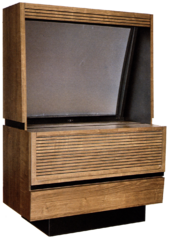
| |||||||||||||
| Sega-Vision | |||||||||||||
|---|---|---|---|---|---|---|---|---|---|---|---|---|---|
| Manufacturer: Muntz Manufacturing | |||||||||||||
|
- For the portable media player, see Sega Vision.
The Sega-Vision is a television set created by Sega Enterprises, Inc. and was the company's first product meant for the home. It was designed by Earl "Madman" Muntz in 1976, a businessman known for wacky television adverts and for coining the phrase "TV" in America. Sega had acquired his company, Muntz Manufacturing, Inc., in June 1976[2], and is thought to have begun selling these units in late 1976/early 1977.
Contents
Hardware
The Sega-Vision is one of the first (if not the first) rear-projection television sets (RPTV) to be released to consumers. While technically the same as the more widespread "direct-view" CRT technology widely used in televisions at the time, the resulting image is projected onto a blank canvas, being enlarged in the process (similar to how cinemas operate with film). This allows the Sega-Vision to be significantly bigger than most TV sets at the time, as this system costs significantly less than producing ever larger CRT displays, however picture clarity is reduced and the system does not operate as well in low light environments.
Sega-Vision sets came in either 44-inch or 50-inch screen varieties, with cabinets standing between five and six feet.
Models
Three models of Sega-Vision were produced:
- Model DCR-530 (MSRP $2395): The flagship model of the Sega-Vision, the television has a 50" diagonal-inch screen and a solid oak roll-top cabinet that covers the screen when not in use. The model comes with a remote control and displays the current channel and time when adjusting volume or switching channels.
- Model C-401 (MSRP $1495): As the budget model, the C-401 has a smaller 44" diagonal-inch screen and lacks the roll-top covering of the DCR-530.
- Model CR-511 (MSRP $1895): An upgraded version of the C-401, the model features a larger 50" diagonal-inch screen and remote control unit.
History
Release
Sega-Vision units started shipping in November 1976, with an "overall distribution effort" commencing at the start of 1977.[1]
Sega used then-Los Angeles Dodgers' first baseman Steve Garvey to promote the television set in TV advertisements. A system is also known to have been a prize in a 1970s edition of The Price Is Right.[3]
Legacy
Sega-Vision televisions were seen as the top-of-the-line at launch, and so were significantly more expensive than the average television of the time. As such, while initially popular with enthusiasts, the sets could not achieve mass market appeal, meaning surviving models are extremely rare. It is not thought any Sega-Visions were sold outside of the United States; the company may not have even managed to develop a country-wide distribution network. Despite this, the television was once officially advertised for sale in Japan by Sega Enterprises.[4]
Earl Muntz left Muntz Manufacturing shortly after it was acquired, and set up a new television firm. However, as Sega had purchased the rights to the "Muntz" name, he was forced to call his new endeavour "Madman Electronics".
Sega left the television market in 1978. To date the Sega-Vision is the only commercial television to be produced by the company, however rear-projection technology was used in some of its arcade games, and continued to be viable for "big" screens until the early 2000s, when LCD monitors became more affordable.
Despite a push from several manufacturers at the time, projection televisions were not a hit with home audiences, as they were expensive, heavy and could not match the sharpness of a "direct-view" CRT display. By the time technology had progressed enough to tackle these issues, superior display technologies had come onto (or were in the process of coming onto) the market.
Magazine articles
- Main article: Sega-Vision/Magazine articles.
Promotional material
Patents
References
- ↑ 1.0 1.1 Cash Box, "January 1, 1977" (US; 1977-01-01), page 33
- ↑ Cash Box, "November 13, 1976" (US; 1976-11-13), page 70
- ↑ File:References ThePriceisRight SegaVision.png
- ↑ File:TVGameMachines Arcade JP Flyer.pdf, page 5
- ↑ https://patents.google.com/patent/USD252993S
- ↑ https://patents.google.com/patent/USD257773S

